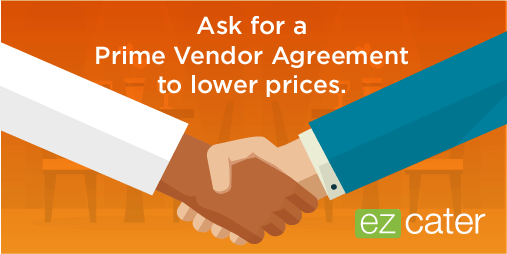In restaurant accounting, your food cost can be described in different ways. One is as a representation of all the food purchased compared to all the food sold during a specific period. Or, the other is plate cost, which is the cost to create a specific plate, recipe, or meal. Regardless of how you account for it, food cost is a major contributor to your margin and profitability as a restaurant. So how can you keep food costs down and plug up the areas where you could be losing money? One of the best ways to control this is with better purchasing habits.
Better Purchasing Habits to Reduce Restaurant Food Cost
According to Restaurant News, food cost fell in 2016. But even so, this represents only a fraction of your total expenses. Taking better control of your food costs can have a massive impact on your overall profitability. Here are four ways to keep yourself organized and start to reduce your costs.
1) Review Your Descending Dollar Report Monthly
Your descending dollar report simply lists your purchases by total amount spent, regardless of quantity. Most vendors will not want to share this with you, and likely will need manager approval to release it. That’s how powerful this document can be. Armed with this information you can negotiate your pricing. It’s important to look at which items you spend the most on in total rather than the items that are most expensive. For example, a 10 cent reduction per case of french fries might represent a larger savings to you than a one dollar per pound reduction in rib eye steaks.
2) Order Consistently Using a Properly Formated Guide
A properly formatted guide should list everything you order per vendor, organized by category. This guide should be shelf to sheet, so it’s easy for you to see where you need to make orders. Making ordering mistakes can cost you. You don’t need the extra inventory lying around and you definitely don’t want to waste food. Blind ordering just does not work. A good guide will save you and your staff hours per order.
3) Order as Much as Possible from as Few Vendors as Possible

This may seem counterintuitive, but by using fewer vendors — and making sure they know you are making that decision — you may be able to negotiate better pricing. Build a relationship with your vendor, and then ask for a Prime Vendor Agreement (or Managed Distribution Agreement). Let them know you would like to give them as much business as possible in exchange for lower prices. If they’re not wasting time fighting for your business, they can focus on giving you the best pricing — guaranteed by contract.
4) Track Purchases Against a Monthly Budget Using a Declining Balance Sheet
If you want to hit a certain food cost, set the target and measure against it. First, determine your desired food cost. And then create a budget for the month. Say you sell $50,000 worth of food in a given month. If you’re trying to keep your food cost at 30%, then your food budget should be set to $15,000. Once you’ve determined that number, use a declining balance sheet to track your purchases each day against your budget. As Chef’s Resources points out, a simple spreadsheet documenting each of your expenses will show you how much you’ve spent so far, but also how much of that $15,000 is left for the month. It’s a good way to make sure you’re sticking to your budget.
Looking to grow your catering business? Sign up with ezCater.







